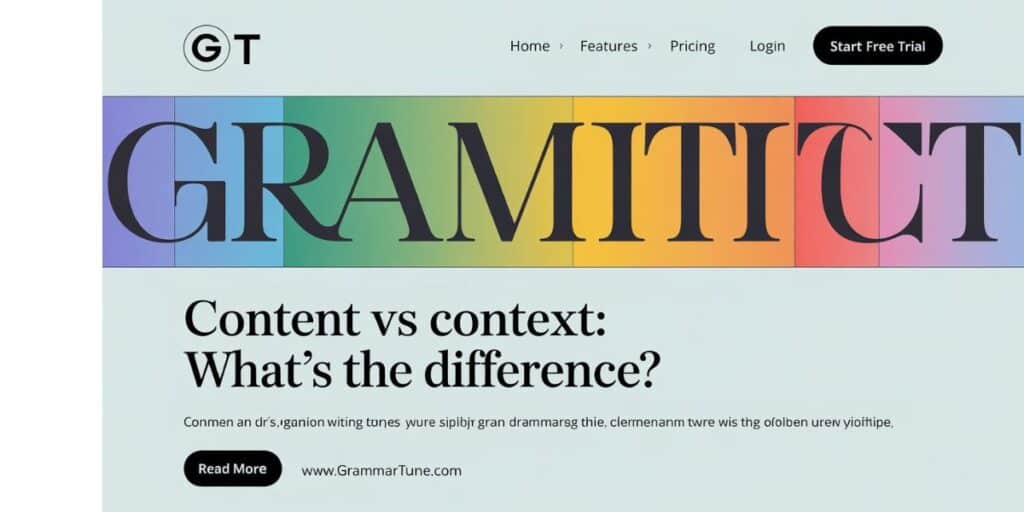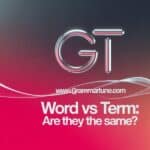Contents and context: the difference between them? Understanding the difference between these two can revolutionize your online communication.
Content is the information you present-a text, image, or video-while context influences how that information is received. Without appropriate context, even the finest content falls flat. In a world where digital interaction is essential, so are the two elements.
To connect with the customer, brands, marketers, or creators require this balancing act. This article therefore throws light on what each does to define some differences and also explains how contextual relevance improves the effectiveness of content.
Table of contents
| No. | Section |
| 1️⃣ | What is Context Analysis and Why is it Important? 📊 |
| 2️⃣ | What is the Context of a Discussion? 💬 |
| 3️⃣ | Content vs Context ⚖️ |
| 4️⃣ | How to Conduct Context Analysis? 5 Steps 🛠️ |
part 2
| No. | Section |
| 5️⃣ | Why is There Confusion? 🤔 |
| 6️⃣ | What is Content? 📄 |
| 7️⃣ | How Content Changes Meaning 🔄 |
| 8️⃣ | What is Context? 🌍 |
| 9️⃣ | Balancing Content and Context ⚖️ |
| 🔟 | Mistakes to Avoid ⚠️ |
🤔 What is context analysis and why is it important?
Context analysis identifies all elements that provide an environment for that message, how outside forces affect the response to your content. These are insights necessary for averting the sticking point. This is how businesses keep evolving and stay connected with true human needs. 🧠 🧠
Must read: Axle or Axel: What’s the Difference?
💬 What is the context of a discussion?
In all that matters to determine the meaning—time, place, mood, and people in place- there lies the context. The context adds much depth and meaning to your words.
You can’t just rely on content. Anything outside could interfere with the message being clearly viewed. 🔍🔍
⚖️ Content vs Context
Content is the message. Context is the setting that gives that message meaning. Think of content as the words, and context as the tone.
They work together like salt and pepper. A great post fails if it’s in the wrong place or at the wrong time. ⏰🗣
🛠️ How to conduct context analysis? 5 steps
Analyzing context isn’t just guesswork. It follows a simple structure. These steps help you get real insights that guide smart decisions. 📊
Let’s break it down step-by-step to make it actionable and clear.
📌 01. Define the topic
Start with a clear goal. What’s your message? What’s the subject you want to explore?
The clearer your topic, the more focused your context analysis will be. 🎯
👥 02. Establish key stakeholders
Know who matters most. These are the people affected by or influencing your content.
Understanding your stakeholders helps tailor your message so it actually resonates. 🗣💡
📈 03. Trend analysis
Look at what’s hot right now. What are people talking about? Where’s the attention?
By tracking trends, your content stays fresh and relevant in its context. 🔥📱
🥊 04. Competitor analysis
Check out what your rivals are doing. How do they deliver their message? What’s working for them?
Competitor analysis gives you a benchmark—and a chance to stand out. 👀📊
🏢 05. Investigate your internal environment
Don’t forget to look inward. Your resources, culture, and goals shape your message too.
Internal context affects how your audience sees and trusts your content. 🧩🏛
🚀 Market Advantage Context Analysis Can Provide
Conducting an excellent analysis of context with a pencil, paintbrush, crystal ball, and magnifying glass is not simply an added value but a true game-changer.
Such a thing helps render your brand a genuine market advantage. 🧠📊 Smarter decisions stunned, big bucks wasted gone, and the right people reached.
You will like: What is the Plural of Chief? Chiefs or Chieves?
🏭 Better Understanding of Your Industry
When you analyze your context, you learn how your industry operates. You see patterns and shifts others might miss.
This keeps your strategies sharp and your brand ahead of the curve. 📉📈
🥊 More Information About Your General Competition
A good context analysis lets you map out who you’re up against. What are they doing right—or wrong?
Knowing this helps you carve out your own unique space in the market. 🎯
🌱 The Ability to Identify New Opportunities
Trends, gaps, and customer frustrations—context analysis brings these to light. That’s where opportunity lives.
Spotting them early helps you pivot fast and grow faster. 💡🚀
❤️ A Deeper Understanding of Consumer Needs
What do your customers care about? What drives their decisions? Context analysis reveals these truths.
When you know what they really want, you can give it to them—better than anyone else. 🧍♀️🧍♂️
📣 Improved Communication With Customers
With context, your messaging hits the right tone at the right time. No more guessing games.
It makes your brand sound human, relatable, and trustworthy. 🤝
🎯 Targeting the Right Audience
No more shouting into the void. Context analysis helps you find and speak to the right people.
You’ll stop wasting time and start building real connections. 🧭👥
📝 Wrap-up
Content vs context isn’t a debate—it’s a partnership. Great content fails without strong context.
Use context analysis to sharpen your message, reach the right people, and win in your space. ✅📈
😕 Why is There Confusion?
People often mix up content and context because they’re deeply connected. You rarely see one without the other.
But they serve different roles—and not knowing the difference can weaken your message.
📄 What is Content?
Content is the actual message you’re delivering. It’s the words, visuals, sounds, or videos you share.
It’s what your audience reads, watches, listens to, or engages with. 🎥📝
🧰 Types of Content
There are tons of content formats out there:
- Blog posts
- Videos
- Social media posts
- Infographics
- Podcasts
Each serves a purpose and appeals to different types of audiences. 🎙️📊
🔄 How Content Changes Meaning
The same piece of content can have varying meanings depending on its framing. A tweet can sound funny or offensive, occurring at any time and in any place. This indicates that context is as relevant as the message itself. 🧠💬. 🧠💬
🌍 What is Context?
Context is the background that shapes how your content is understood. It includes time, place, audience, and tone.
Without it, the message can get misinterpreted or ignored. 🕰️📍
🗂️ Types of Context
Context isn’t one-size-fits-all. It has different layers, like:
- Historical
- Cultural
- Situational
- Social
Each adds depth to how your message is received. 🌐
🏛️ Historical Context
Historical context looks at the time period surrounding the message. When something was said matters.
It helps the audience understand events, references, or ideas better. 🗓️
🎎 Cultural Context
Every culture interprets content in its own way, meaning something might become normal for a particular society while becoming a taboo for another.
Cultural contextualization saves from eventualities of misunderstanding and shows respect toward your audience. 🌏 🌏
🧭 Situational Context
The situation one finds himself in influences how he will perceive a certain message. For example, a joke made at a serious point will not be funny. Therefore the tone and everything else come into play. 🕵️♀️ 🕵️♀️
🧑🤝🧑 Social Context
The person you are talking to determines how the message is going to come across: a friend, a customer, or an outsider. Social context gives that adjustment of voice and approach. 🧑💼🧑🎓
🔄 How Context Changes Meaning
A simple phrase like “We need to talk” sounds different in a job interview vs. a date. 😬
Context gives your words meaning—and changes how they’re interpreted.
🆚 Content vs Context: The Differences
Content is the “what.” Context is the “how,” “where,” and “why.”
One delivers the message. The other makes sure it lands right. ⚖️📣
🎯 Balancing Content and Context
Success comes from getting both right. Strong content in the wrong context still fails.
Balance makes your message more powerful, persuasive, and personal. 🪄
🚫 Why Content Alone Isn’t Enough
You could write the perfect post, but if it’s shared at the wrong time, it won’t connect.
Context turns great ideas into real impact. ⏱️💥
🤝 How Content and Context Work Together
Think of content as the voice and context as the stage. Together, they create meaning.
When aligned, they spark emotion, build trust, and drive action. 🎤🎭
✅ Tips for Getting It Right
To master content and context, think like your audience. What do they need? What are they feeling?
Right message, right moment—that’s the sweet spot. 🎯
🧠 Know Your Audience
Everything starts with them here. Who are they? What do they care about?
Understanding your audience can make your content to feel really meaningful and engaging with this . 🧍♀️🧍♂️💬
🧍♀️🧍♂️💬
🎭 Match Content to Context
Don’t just publish—adapt. A message that works on LinkedIn might flop on TikTok.
Every platform, moment, and mood demands the right tone. 📱🕰️
🛠️ Simple Tools and Tips for Better Communication
Embrace plain language. Use short paragraphs. Visuals help drive home a point. And keep checking for your vibe.
Free tools like Grammarly, Hemingway, and even reading aloud can create wonders. 📢🧰 📢🧰
⚠️ Mistakes to Avoid
Don’t assume one message fits all. And don’t ignore how your audience is feeling.
A great idea, shared poorly, still fails. ❌🧨
🚫 Common Issues with Ignoring Context
An important consideration to keep in mind is that one may receive a message lacking context as cold, confusing, or indeed, even offensive. It’s the manner and timing that counts. 📉🤐📉🤐
🧱 When Focusing Too Much on Content Goes Wrong
Over-polished content with no real understanding behind it? That’s a recipe for disconnection.
If it doesn’t feel human, it won’t reach humans. 💻🚫
🧩 How to Fix Misunderstandings
First, listen. Then clarify. Don’t get defensive—just reset the message with better context.
Sometimes, a quick reframe is all it takes. 🔁💬
📚 Origins of the Words “Content” and “Context”
Want to geek out for a moment? Knowing where these words come from can deepen your understanding.
Let’s explore the roots behind the buzz. 🌱🔤
📝 Origins of the Word “Content”
Many people connect the meaning of content to processes like packaging, distributing, and making information available through a variety of media. Content refers to knowledge on a certain topic-a spiritual and persuasive determination-the substance embedded in all these.
In modern use, it’s what fills your media—your message, your meaning. 📦📰
📖 Origins of the Word “Context”
Context stems from Latin contextus, meaning “a joining together.” Think threads weaving into fabric.
It’s all the conditions that shape meaning—and it holds the content in place. 🧶📘
You will like: Buses or Busses: What’s the Correct Plural of Bus?
Conclusion
There is no end to debate in Content vs Context: What Differences. Indubitably, both aspects form the crux of effective communication- the content gets across the idea. But earmarked contexts fail even the best of ideas and render them ineffective, if at all it shine. This is where the entire game lies between these two.
Know your audience and place your message in context around hearing and delivering on the right medium. From this mastery of content and context, a message ends up succeeding in reverberating and entirely connecting with its target audience.
FAQ,S
What’s the difference between content and context?
Content is the message; context is the setting that gives it meaning. 🧠🗣
Why does context matter in communication?
Without context, even great content can be misunderstood. It sets the tone. 🎯
Can the same content work in every situation?
Nope! Each platform and audience needs its own tailored context. 📱🎭
How can I improve my content strategy?
Start with audience insights, align with the right context, then create. 🛠️📊
What tools help with content-context alignment?
Try tools like Grammarly, BuzzSumo, and trend trackers. Simple, but effective. 🔍

Joulia, a seasoned wordsmith and grammar enthusiast, brings over a decade of blogging expertise to Grammar Tune. With a keen eye for linguistic precision and a passion for making complex grammar concepts accessible, he has helped thousands of readers enhance their writing skills. His engaging teaching style and practical approach to language learning have made him a trusted voice in the online grammar community.







